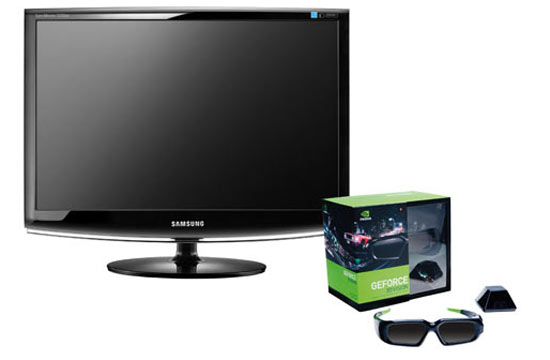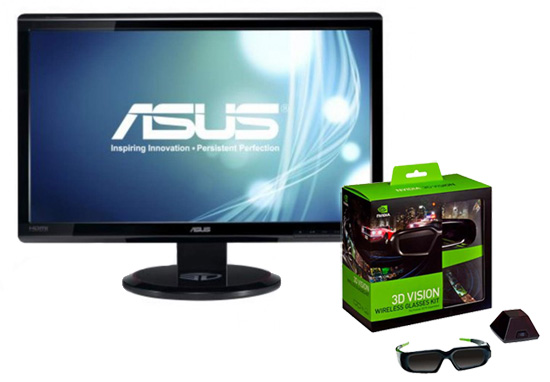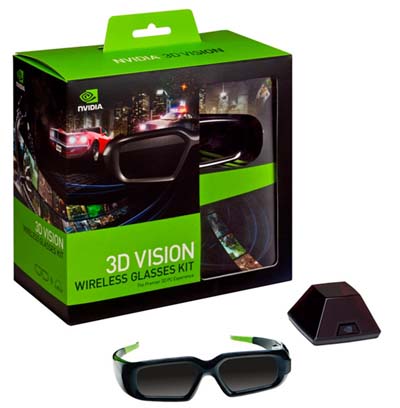NVIDIA 3D Vision w/ ASUS VG236HE 3D Display Review
By
NVIDIA 3D Vision
3D. Some love it, some hate it, others think it is nothing more than a useless gimmick. To be honest, before I started this review, I had mixed emotions on this technology. See a few 3D movies and while a few of them have been done very well, others have almost ruined it completely. However, no matter what ones opinion is on 3D technology, it appears like it is here to stay.

Most will be familiar with the red-blue lens (Anaglyph) 3D format, the kind many of us experienced at a much younger age with those cardboard framed plastic lens glasses you would get from a magazine or comic book. Some will be familiar with the polarized lens format common at most movie theatres. Fewer yet will remember the effect known as parallax which was used in Nintendos short lived Virtual Boy. Today we are taking a look at another technique called stereoscopic 3D which NVIDIA uses in their 3D Vision solution.

Stereoscopic 3D imaging is a technique for creating the illusion of depth by offsetting two images separately to each eye. Without proper stereoscopic glasses the image looks blurry due to both eyes observing each frame. Add proper eyewear and the image becomes 3D due to each lens blocking alternating frames giving each eye its own image and tricking your brain into creating depth. This technology has been used in the past, however it was NVIDIA that really introduced it to mainstream PC gamers.

We have reviewed this system previously and since then quite a bit has changed. Back in 2009 when it was reviewed the NVIDIA 3D Vision kit was $199 and the Samsung Syncmaster 2233RZ was priced at $598 making for a grand total of around $800 for a 3D Vision setup. Also with this monitor only supporting 1680 x 1050 it was not a true HD monitor and as such would not support playing 3D Blu-ray movies natively.

Fast forward two years and the wireless 3D Vision kit is priced around $128 and an LCD such as the ASUS VG236HE is priced at around $314 which comes to a total of around $450. On top of a $350 price reduction, an almost 45% drop, the new LCD monitors run at 1920 x 1080 giving them true 1080p HD support granting the ability to watch 3D Blu-ray movies.

Overall the wireless 3D Vision kit is mostly unchanged in two years. The glasses have undergone an internal revision giving them a larger capacity battery allowing for up to 60 hours on a single charge. 3D Vision still requires a GeForce 8800 or higher gaming graphics card (a GeForce GTX 500-series card is recommended for the best 3D gaming experience), a 120hz monitor and of course the 3D Vision kit. A wired 3D Vision kit has also been released, with a price point of around $99.
Much has changed however in the past two years for the 3D Vision experience. Game support has increased in both quality and quantity and continues to grow. As mentioned, watching 3D Blu-ray movies at home using this system is also now possible. Major sporting events and websites are starting to take notice of this technology as well, supporting streaming video of live events and other videos. And, late last year NVIDIA introduced 3DVisionLive.com, a website that serves up 3D videos (game captures, movie trailers and more) and 3D photos, including user-generated 3D photos. Overall the 3D Vision experience has improved enormously. Let’s take a look at what you get and how it performs today.

Comments are closed.